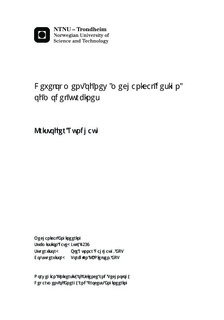Development of new mechanical design of model turbines
Master thesis
Permanent lenke
http://hdl.handle.net/11250/228248Utgivelsesdato
2014Metadata
Vis full innførselSamlinger
Sammendrag
The production of model Francis runner to be used in the Waterpower laboratory at NTNU is a length and costly process. Due to the production cost there are years between each time a new Francis model is bought. The Tokke Francis model at Waterpower laboratory, was given from the industry after they had run model tests in the laboratory when design- ing the Tokke prototype.In order to give the students at the Waterpower laboratory an opportunity to design their own turbines and test, the production cost must be significantly reduced. To be able to do that, new designs need to be developed and new production method used.The objective of this thesis is to carry out a new mechanical design of a Francis model runner and evaluate different mechanical designs of guide vanes and stay vanes. The new alternative designs were made with a combination of standard production methods and material, and new plastic materials from rapid prototyping such as selective laser sintering (SLS) and rapid CNC machining.To carry out the new mechanical runner design, the MATLAB design software Khoj was used. From Khoj two sets of streamlines were generated, one set for the sucction side and one for the pressure side. Then the streamlines were imported into the CAD program PTC Creo Parametric and a 3D-model of the design was made.Two test pieces in a polyamide material was made using selective laser sintering. One of the test pieces was tested for pull-out strength using some self tapping thread inserts, the results showed that the pull-out strength was more than good enough. The threaded insert could be used to attach the runner vanes to the hub and ring.The main focus of this thesis has been the new mechanical design of a model runner and runner vanes. The model design was not produced and tested in the laboratory due to lack of time and money.
